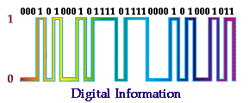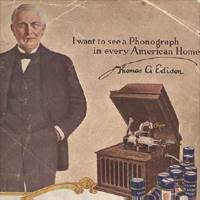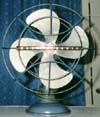hmmmm; i’m still not sold on this
october 14th, 2002

January's curator is Chicago's Allison Stanley: talented multi-instrumentalist who plays with the SILVER measure, the transaction Ensemble, and the autumn-waking.
october 14th, 2002

october 11th, 2002
Thomas Alva Edison, American inventor, inventor of a practical electric light bulb, electric generating system, sound-recording device, and motion picture projector.
Edison, Thomas Alva (1847-1931), American inventor, whose development of a practical electric light bulb, electric generating system, sound-recording device, and motion picture projector had profound effects on the shaping of modern society.
Edison was born in Milan, Ohio, on February 11, 1847. He attended school for only three months, in Port Huron, Michigan. When he was 12 years old he began selling newspapers on the Grand Trunk Railway, devoting his spare time mainly to experimentation with printing presses and with electrical and mechanical apparatus. In 1862 he published a weekly, known as the Grand Trunk Herald, printing it in a freight car that also served as his laboratory. For saving the life of a station official’s child, he was rewarded by being taught telegraphy. While working as a telegraph operator, he made his first important invention, a telegraphic repeating instrument that enabled messages to be transmitted automatically over a second line without the presence of an operator.
Edison next secured employment in Boston and devoted all his spare time there to research. He invented a vote recorder that, although possessing many merits, was not sufficiently practical to warrant its adoption. He also devised and partly completed a stock-quotation printer. Later, while employed by the Gold and Stock Telegraph Company of New York City he greatly improved their apparatus and service. By the sale of telegraphic appliances, Edison earned $40,000, and with this money he established his own laboratory in 1876. Afterward he devised an automatic telegraph system that made possible a greater speed and range of transmission. Edison’s crowning achievement in telegraphy was his invention of machines that made possible simultaneous transmission of several messages on one line and thus greatly increased the usefulness of existing telegraph lines. Important in the development of the telephone, which had recently been invented by the American physicist and inventor Alexander Graham Bell, was Edison’s invention of the carbon telephone transmitter.
In 1877 Edison announced his invention of a phonograph by which sound could be recorded mechanically on a tinfoil cylinder. Two years later he exhibited publicly his incandescent electric light bulb, his most important invention and the one requiring the most careful research and experimentation to perfect. This new light was a remarkable success; Edison promptly occupied himself with the improvement of the bulbs and of the dynamos for generating the necessary electric current. In 1882 he developed and installed the world’s first large central electric-power station, located in New York City. His use of direct current, however, later lost out to the alternating-current system developed by the American inventors Nikola Tesla and George Westinghouse.
In 1887 Edison moved his laboratory from Menlo Park, New Jersey, to West Orange, New Jersey, where he constructed a large laboratory for experimentation and research. (His home and laboratory were established as the Edison National Historic Site in 1955). In 1888 he invented the kinetoscope, the first machine to produce motion pictures by a rapid succession of individual views. Among his later noteworthy inventions was the Edison storage battery (an alkaline, nickel-iron storage battery), the result of many thousands of experiments. The battery was extremely rugged and had a high electrical capacity per unit of weight. He also developed a phonograph in which the sound was impressed on a disk instead of a cylinder. This phonograph had a diamond needle and other improved features. By synchronizing his phonograph and kinetoscope, he produced, in 1913, the first talking moving pictures. His other discoveries include the electric pen, the mimeograph, the microtasimeter (used for the detection of minute changes in temperature), and a wireless telegraphic method for communicating with moving trains. At the outbreak of World War I, Edison designed, built, and operated plants for the manufacture of benzene, carbolic acid, and aniline derivatives. In 1915 he was appointed president of the U.S. Navy Consulting Board and in that capacity made many valuable discoveries. His later work consisted mainly of improving and perfecting previous inventions. Altogether, Edison patented more than 1000 inventions. He was a technologist rather than a scientist, adding little to original scientific knowledge. In 1883, however, he did observe the flow of electrons from a heated filament—the so-called Edison effect—whose profound implications for modern electronics were not understood until several years later.
In 1878 Edison was appointed Chevalier of the Legion of Honor of France and in 1889 was made Commander of the Legion of Honor. In 1892 he was awarded the Albert Medal of the Society of Arts of Great Britain and in 1928 received the Congressional Gold Medal “for development and application of inventions that have revolutionized civilization in the last century.” Edison died in West Orange on October 18, 1931.
october 09th, 2002

The word phonograph was the trade name for Edison’s device, which played cylinders rather than discs. The machine had two needles: one for recording and one for playback. When you spoke into the mouthpiece, the sound vibrations of your voice would be indented onto the cylinder by the recording needle. This cylinder phonograph was the first machine that could record and reproduce sound created a sensation and brought Edison international fame.
August 12, 1877, is the date popularly given for Edison’s completion of the model for the first phonograph. It is more likely, however, that work on the model was not finished until November or December of that year, since he did not file for the patent until December 24, 1877. He toured the country with the tin foil phonograph, and was invited to the White House to demonstrate it to President Rutherford B. Hayes in April 1878.
In 1878, Thomas Edison established the Edison Speaking Phonograph Company to sell the new machine. He suggested other uses for the phonograph, such as: letter writing and dictation, phonographic books for blind people, a family record (recording family members in their own voices), music boxes and toys, clocks that announce the time, and a connection with the telephone so communications could be recorded.
october 07th, 2002

checking in to the radar station
——- —— — — — - — ———
I shall begin with a genuine Hello to you. so; i have been thinking about this muted tones submission that my friend josh was so kind to have invited me to be involved in. somewhat stuck in betweens… thinking i may post a piece i have already composed and recorded, as well as record a new piece taylored with muted tones in mind.
we’ll see
by the way, i bought this fan this past weekend in iowa. i was excited because my dad has one of these. until now i always considered the accident of putting it in my car after visiting.